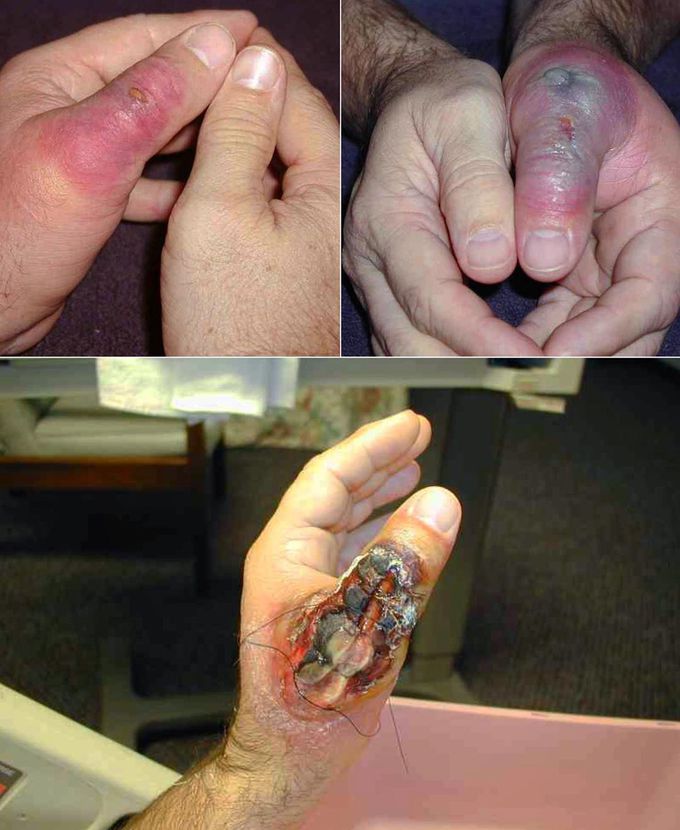


Spiders bite
This is why many peoples’ nightmares contain spiders. An extreme case showing brown recluse spider bite of the thumb! 🕷 The top left image was taken 3 days after the bite, and presented is progressive redness as well as tissue destruction. The top right image is at 6 days after the incident. In the bottom image, 9 days after being bitten, this patient is suffering from severe tissue destruction due to the venom of the brown recluse spider. This person got bitten by a spider, but little did he know that it had been a brown recluse spider, whose venom is known to destroy cartilage, as well as soft tissue and skin. These spiders are generally not violent and bite only when threatened, generally when pushed up against the aggressor’s skin. The brown recluse venom can destroy human tissue. The victim may not feel or notice the bite when it occurs. At first, the bite site may appear like any other insect bite - a little red, itchy and inflamed. Over the course of a few days, the venom destroys the surrounding tissues. The wound gets larger, more painful, and darker in color. Necrosis (tissue death) is identified when the tissue becomes black in color and forms a crust that eventually falls off. The venom can penetrate deeper in the tissues, sometimes affecting the fat and muscles. The wound formed from the venom can quickly and easily allow an infection to set in, worsening the wound-healing process. Leaving it untreated, allowed the venom to cause this lesion. This venom contains a rare protein that can cause a lesion, or a much less common, but more dangerous, systemic reaction in humans, depends on the amount of venom injected. The most common response is inflammation that after one to two days can develop into a "dark lesion" surrounding the bite site. The blackening, or necrosis, of the skin is dead skin cells, evidence of the immune system's efforts to prevent spread of the toxin by preventing blood flow to the affected area. It can be also dry, blue-gray or blue-white, with an irregular sinking patch with torn edges and extremely swollen and red with the open wound ranging anywhere from a few centimeters to a few inches in size.
I don't know if the name is correct in English but for the Loxoceles species there's an antiloxocelic antivenom. Here in Brazil it's called SaLox (soro antiloxocélico). Dose depends on the severity of the case. Prednisone is used in moderate to severe cases (40mg for adults, 1mg/kg for kids up to 40mg a day). Maintain hydration to prevent acute kidney injury. Information from Brazil's Ministry of Health: https://www.google.com/url?sa=t&source=web&rct=j&url=https://www.saude.go.gov.br/files/vigilancia/toxicologica/Nota-t%25C3%25A9cnica_Protocolos-cl%25C3%25ADnicos-e-recomenda%25C3%25A7%25C3%25A3o-para-vigil%25C3%25A2ncia-maio_2014.pdf&ved=2ahUKEwi8vpCg8_nrAhVgILkGHW4EAUwQFjABegQIBRAB&usg=AOvVaw1CYnH68BaiDfGtVbBAsCSa




